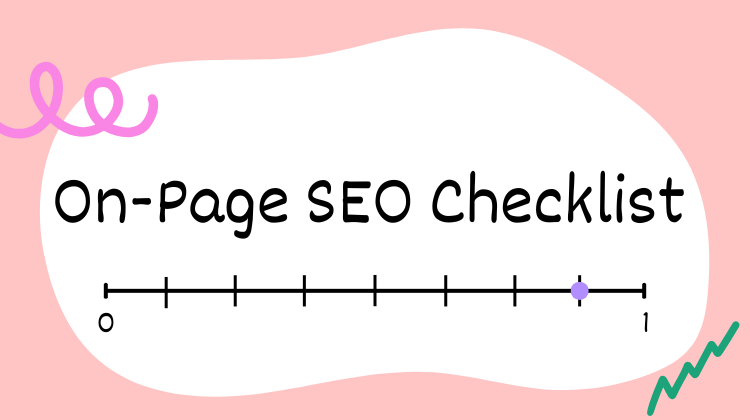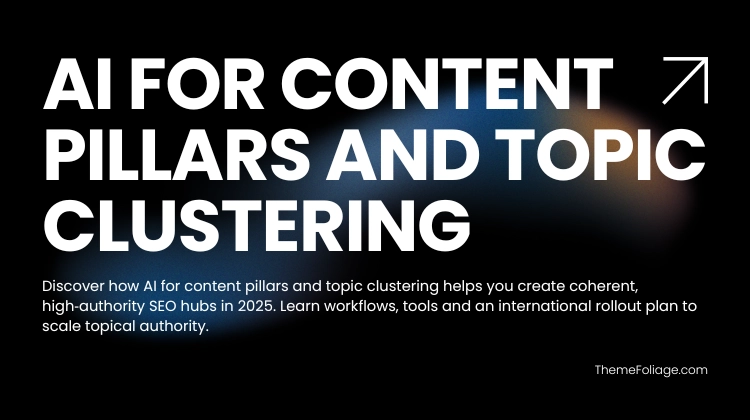This practical on-page SEO checklist 2025 gives you everything you need to audit, optimise and publish pages that perform in search. It is designed to be actionable, each section contains specific checks you can implement immediately or hand to a content or development team.
Complete On-Page SEO Checklist 2025
1. Intent and target keyword
Start every page by defining user intent. Is the page informational, transactional, navigational or commercial research? The intent determines structure, headings and calls to action.
- Choose a single primary keyword or search intent cluster per page.
- List 3–5 secondary keywords or long-tail variants to include naturally.
- Gather SERP context: featured snippets, People Also Ask, knowledge panels and competitors’ approaches.
2. Title tag and meta description
Title and meta description are your CTR assets in the SERP.
- Title tag: keep between 50 and 60 characters; include the primary keyword near the start if natural.
- Meta description: 120–155 characters; write for clicks, use benefit language and a clear CTA.
- Avoid keyword stuffing; write unique metadata for each page.
- Consider dynamic title variants for large e-commerce catalogues (but test before site-wide rollout).
3. Headings and content structure
Headings provide hierarchy for readers and search engines.
- One H1 only, make it clear and aligned to page intent.
- Use H2s and H3s to break content into scannable sections; include semantic keyword variants in subheads.
- Keep paragraphs concise for readability, but do not sacrifice clarity for brevity.
- Use bullets, numbered lists and tables where they improve comprehension.
4. Content quality & E-E-A-T
Google emphasises experience, expertise, authoritativeness and trustworthiness. Your content must demonstrate these.
- Provide accurate, well-sourced information and cite reputable sources when appropriate.
- For YMYL topics, include author bylines, qualifications and references.
- Update stale facts or dates and show last-updated metadata where useful.
- Avoid filler; each paragraph should add value and align to user intent.
5. Keyword usage & natural language
Use your primary keyword naturally, forced repetition will harm readability and may reduce rankings.
- Place the primary keyword within the first 100 words where practical.
- Use LSI/semantic variations to cover topic comprehensively; aim for natural distribution.
- Include question phrases from People Also Ask to capture long-tail queries.
6. Images and media
Optimised images improve UX and help performance metrics.
- Compress images and serve responsive sizes with srcset.
- Use lazy loading for below-the-fold images.
- Write descriptive alt text that communicates the image’s purpose for accessibility and SEO.
- Provide captions or transcripts for videos if they add value.
7. Internal linking strategy
Internal links distribute authority and help users discover related pages.
- Link from relevant pillar pages to cluster pages and vice versa.
- Use descriptive anchor text that signals the linked page’s topic.
- Avoid overloading the page with links; prioritise user value and topical relevance.
- Ensure important pages are reachable within a few clicks from the homepage.
8. URL structure and canonicals
Your URL should be readable, short and indicative of the topic.
- Use lowercase letters and hyphens; avoid query strings where a static URL will suffice.
- Keep URLs concise — remove stop words where helpful.
- Set a canonical tag for duplicate or similar content to consolidate signals.
9. Schema & structured data
Structured data increases the chance of SERP features and clearer search engine understanding.
- Apply Article, Breadcrumb, Product, FAQ or HowTo schema where relevant.
- Validate schema with Google’s Rich Results Test or the Schema validator in Search Console.
- Be accurate: do not markup content that does not exist on the page (that risks manual actions).
10. Mobile-first & performance
Mobile experience and page speed are ranking signals and affect conversion.
- Aim for a good Lighthouse Performance score (practical target: LCP ≤2.5s in lab and fast field metrics).
- Prioritise critical CSS, defer non-critical scripts, and serve images in modern formats when feasible.
- Test on real devices and use field data (Core Web Vitals in Search Console) as the source of truth.
11. Indexability & crawl controls
Confirm that the page can be crawled and indexed if you want it to appear in search.
- Check robots.txt, X-Robots-Tag headers and meta robots tags.
- Ensure canonical tags do not inadvertently point to another page.
- Submit important new pages via sitemap and (selectively) request indexing in Search Console.
12. Redirects & error handling
Broken pages and improper redirects waste crawl budget and harm UX.
- Use 301 redirects for permanent moves and 302 for temporary changes.
- Audit 404s regularly and fix or redirect high-value broken links.
- Maintain a custom 404 page with helpful navigation and internal discovery links.
13. Accessibility & inclusivity
Accessible pages reach more users and reduce legal risk.
- Use semantic HTML and ARIA roles where necessary.
- Ensure colour contrast meets WCAG AA and that keyboard navigation is tested.
- Provide alt text and captions for non-text content.
14. Analytics, tracking & measurement
Instrument the page so you can measure value and learn from performance.
- Track page views, events and conversion funnels in your analytics platform.
- Use UTM tagging for internal campaigns to attribute correctly.
- Monitor Search Console for impressions, clicks and average position changes.
15. Pre-publish QA checklist
- Spelling, grammar and tone check passed.
- All links working and pointing to correct pages.
- Meta tags unique and optimised.
- Schema validated and JSON-LD present where needed.
- Images compressed and alt text present.
- Mobile preview reviewed on multiple devices.
- Analytics and Search Console tracking confirmed.
16. Post-publish monitoring & iterative optimisation
Publishing is not the end, monitor and improve.
- Track short-term signals: indexing, initial impressions and clicks.
- After 2–8 weeks, review average position, CTR and engagement; make targeted edits.
- Run A/B tests on title tags or on-page CTAs when CTR or conversion is suboptimal.
17. Example: applying the checklist to a blog post
Use this minimal example as a template:
- Primary keyword: how to set up CSS grid (informational).
- Title: How to Set Up CSS Grid — A Practical Step-by-Step Guide.
- H2s: Overview, Why use CSS Grid, Basic examples, Common pitfalls, Resources.
- Schema: Article + HowTo if the content contains stepwise instructions.
- Internal links: Link to CSS fundamentals pillar page and related tutorials.
- Images: code screenshots with alt text and downloadable code snippet file.
18. Tools & quick resources
Recommended tools for on-page audits and implementation:
- Site crawlers: Screaming Frog, Sitebulb.
- Page speed: Lighthouse, WebPageTest, PageSpeed Insights.
- Schema testing: Rich Results Test, Schema.org validators.
- Keyword & SERP research: Google Search Console, Ahrefs, SEMrush.
- Content optimisation: Surfer SEO, Clearscope (use editorial judgement with all AI/suggestion tools).
19. Common mistakes to avoid
- Publishing without a defined intent or target keyword cluster.
- Over-optimising visible text with keyword stuffing.
- Blindly applying schema where the content does not support it.
- Ignoring mobile UX and Core Web Vitals field metrics.
20. Final checklist
Use this short, printable version when publishing:
- Intent & keyword confirmed.
- Title, meta and H1 optimised.
- All headings logical and scannable.
- Primary keyword in first 100 words.
- Images optimised and alt text present.
- Schema validated.
- Canonical set; robots check passed.
- Analytics tracking in place.
- Mobile & speed checks passed.
- Pre-publish QA completed.
Conclusion
On-page SEO Checklist 2025 will help you rank on Google easily. On-page SEO in 2025 remains a disciplined combination of user-first content, technical hygiene and measured iteration.
Use this checklist as a living document: adapt items to your site architecture, track outcomes, and prioritise changes that drive measurable gains.
With a consistent on-page process, you’ll reduce errors, increase organic visibility and make smarter content investments.
You should read our article on How to Run a Technical SEO Audit.



